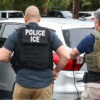H.R. 2499, the Puerto Rico Democracy Act, contains language that will rig the election in favor of Puerto Rican statehood. I have written a more comprehensive post titled “Puerto Rico Democracy Act – Legislation Biased in Favor of Statehood” on why this legislation is biased in favor of statehood. The Senate is the next stop for this legislation, and it will be interesting to see if Senate Majority Leader Harry Reid (D-NV) tries to bring up the bill this year. One important point of contention is the fact that this process is far different from the pathways of Alaska and Hawaii to statehood.
As I wrote on the Foundry:
The legislation contains many questionable provisions. First, the legislation sets up a voting process rigged for success. The legislation sets up a preliminary vote and the voters are given two options. If a majority of Puerto Ricans vote in favor of changing the status of the Commonwealth of Puerto Rico to “a different political status,” then a second vote would be scheduled to poll voters on the following three options:
1. “Independence: Puerto Rico should become fully independent from the United States;”
2. “Sovereignty in Association with the United States: Puerto Rico and the United States should form a political association between sovereign nations that will not be subject to the Territorial Clause of the United States Constitution;” and,
3. “Statehood: Puerto Rico should be admitted as a State of the Union.”
The Daily Signal depends on the support of readers like you. Donate now
This vote is rigged. The Puerto Rican people have rejected statehood on three occasions. The first vote was in 1967 when the people of Puerto Rico chose to continue as a Commonwealth (60%) over the other choices of statehood (39%) or independence (1%). In the two other votes, in 1993 and 1998, the people of Puerto Rico rejected statehood by closer margins. The obvious question is: why would we expect this vote to be different? We expect it to be different because the proponents of statehood have set up a false choice in the voting process.
According to H.R. 2499, the Puerto Rican people will get to vote on the following question:
Mark one of the following 2 options:
1. Puerto Rico should continue to have its present form of political status.
2. Puerto Rico should have a different political status.”
If a majority votes for “continue to have its present form of political status,” then Puerto Rico can schedule votes every 8 years until they get a majority for Option 2. If a majority chooses Option 1, then they would be voting to say as a Commonwealth. It is odd that the Commonwealth of Puerto Rico would be empowered to schedule elections every 8 years until they can pass the change option.
If a majority of Puerto Ricans vote for “a different political status,” then there will be a second vote, a plebiscite, to poll Puerto Ricans on the new status including “Independence,” “Sovereignty in Association with the United States,” or “Statehood.” This provides a false choice. This bifurcated vote is intended to disenfranchise those voters who choose to remain a Commonwealth in the first vote, because they are not given the option “Commonwealth” in the second vote. It is possible for 49% of the voters to choose to remain a Commonwealth, yet they will not have the option to vote for a Commonwealth in the second vote.
Another provision that rigs the process in favor of statehood is the fact that Puerto Rican born citizens will be allowed to vote in this election without a residency requirement. If a Puerto Rican national is born in the Commonwealth, then moves to the states, that individual would be allowed to vote in Puerto Rico and the state they reside. This is unfair and common sense dictates that Puerto Rican nationals living in the United States are more likely to vote for statehood than an individual who has resided in Puerto Rico their whole life.
This process parts from the examples of Alaska and Hawaii. According to the Alaska Historical Society, “in 1955, the territorial legislature passed legislation authorizing a constitutional convention. Alaskan voters elected fifty-five delegates from across the territory. They met at the University of Alaska in Fairbanks in November 1955 to write a constitution for the proposed state. Alaskans voted approval of the constitution in April 1956. The new constitution was to take effect when and if Congress granted statehood for Alaska.” According to the official website of the Hawaii 50 Anniversary of Statehood Commission, “on November 7, 1950- The Hawai‘i State Constitution is approved by the people with a vote of 82,788 to 27,109.”
It is possible to win statehood with a mere 34% of the vote deviating from the Alaska and Hawaii precedents. Congressman Doc Hastings (R-WA) argues that “H.R. 2499 deviates strongly from the precedent and process used to admit Alaska and Hawaii as states. If a Congressionally-sanctioned plebiscite is sought first in a manner directly contrary to the Alaska and Hawaii precedent, as H.R. 2499 does, then understanding of what statehood would mean to Puerto Rico and the existing 50 states – but that is not at all happening in the House.” Statehood may be the choice of a majority of Puerto Ricans and the process should be fixed so that the precedent set over 50 years ago is followed. A simple plurality of Puerto Rican voters is not enough to prove that the residents of Puerto Rico really want statehood.






























